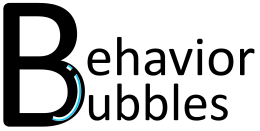One of the most common questions parents’ tend to ask would be “why is my child behaving this way?”. As such, what better way to start off this website than by answering this fundamental question.
There are 4 functions of behavior. These functions are:
1) Attention – Getting the notice of someone (Can be both positive or negative)
2) Escape – Getting rid of/ not contacting something aversive
3) Tangible – Getting an item or activity
4) Automatic/ Sensory – intrinsically motivated by one’s actions/ sensations experienced
___________________________________________________
Let us look at some examples of each function in a daily life scenario to aid the understanding of why behaviours occur.
Attention
1a) You are at the grocery store shopping. The child is sitting in the trolley and you are on your phone. The child starts engaging in a behavior (i.e. screaming/ crying). At this point, you put down your phone and engage the child to find out what is wrong (provided attention). The child stops crying after attention is provided.
1b) The child is in school. The child starts screaming in the middle of class (behavior). The teacher and the students stop what they are doing and looks at the child (provided attention). The child stops screaming.
Escape
2a) You are at the grocery store shopping. The child is overwhelmed by the lights, sounds, and crowd in the store. The child starts engaging in a behavior (i.e. screaming/crying). You bring the child out of the store to a quiet area. The child gets to escape the aversive environment (the noisy store) into a quieter more comfortable environment.
2b) The child is in school. A worksheet is given to the child to complete. The child tears the worksheet and throws the pencil (behavior). The worksheet is gone. As such, the child has escaped from doing the worksheet.
Tangible
3a) You are at the grocery shop shopping. The child spots the candy at the checkout counter. At this point, the child starts engaging in a behavior (i.e. screaming/crying) whilst gesturing to the candy. You grab a candy and pass it to the child. The child stops engaging in the behavior upon receiving the candy.
3b) The child is having snack time in school. The child looks around and snatches the snack from their classmate (behavior). The child eats the snack.
Automatic/ Sensory
4a) An insect bites the child. The bite is itchy. The child starts to scratch the bite (behavior). The itch is relived. In this case, no attention is provided to the child by anyone. The child is not escaping any demands placed on them and does not receive an item for scratching.
4b) The child is sitting in a corner. The child starts shaking his legs. The child finds shaking his legs enjoyable.
____________________________________________________
By looking and understanding the functions of behavior, this helps one to brainstorm a more desirable alternative functional form of behavior (i.e. calling the person’s name/ raising their hand for attention instead of screaming and crying) instead of accepting the less acceptable alternative they currently engage in.
Hope this post helps you guys to understand more about the functions of behavior. Feel free to comment should you have any questions or topics you are interested in reading more about!

